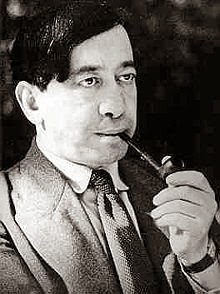In his 1927 essay “Photography,” Siegfried Kracauer describes--in
a writing style meant to mimic the cinematic experience--the new and improved
20th century flaneur,
the camera-friendly and filmic flaneur, belonging to the world of moving
images, who strolls the kaleidoscopic streets, mingling “with unidentified
shapes and fragmentary visual complexes.” Unlike the original urban saunterer of
19th Century Paris,
whom Baudelaire, then later Benjamin & Co., established as the prototype of
European Modernism, Kracauer’s movie-age loafer experiences his surroundings
“as loose throngs of sketchy, completely indeterminate figures… An incessant
flow casts its spell over the flaneur, or even creates him. The flaneur is intoxicated with life
in the street—life eternally dissolving the patterns which it is about to
form.”
Back in the early days of network culture--AKA the
nineties--critics and commentators developed the idea of the cyberflaneur.
This digital version was no longer a stroller of boulevards, panoramic or
otherwise; she/he was a surfer, an “explorer” and a “navigator, the connected
roamer passively clicking and drifting through still-developing virtual
geography. Now flash forward to 2012, the year the Twitter Era well and truly took
dominion, and Evgeny Morozov, in his New York Times articles, declares “The
Death of the Cyberflaneur.” He argues that the socially-networking subject
doesn't just passively explore digital arcades of Geocities and EBay like she/he
might have 15 years ago—she/he gets shit done: uploading, downloading,
chatting, masturbating, and endlessly consuming.
Noticing the date of the Morozov article (it was published in
early 2012), I can’t help but think about the major change in social media between
then and now—namely the Instagram Revolution.
From an image-based/photographic standpoint—and if we’re using cinepoetics as an analogy in our experiment, we should probably come at it from here—Instagram helped reintroduce the simple image (as opposed to the
more multimodal and intertextual Facebook photo apparatus) as an online
communication device. With this in mind, as we seek a metaphysic for electracy, and if we employ Lacanian
psychoanalysis as our theory model, the concept of the flaneur is pivotal and
can be used to describe the egent’s drive and desire as well as the digitized
Gaze she/he suffers from. Furthermore,
if we take as contrast the aesthetics of the lyric poet of ancient China


No comments:
Post a Comment